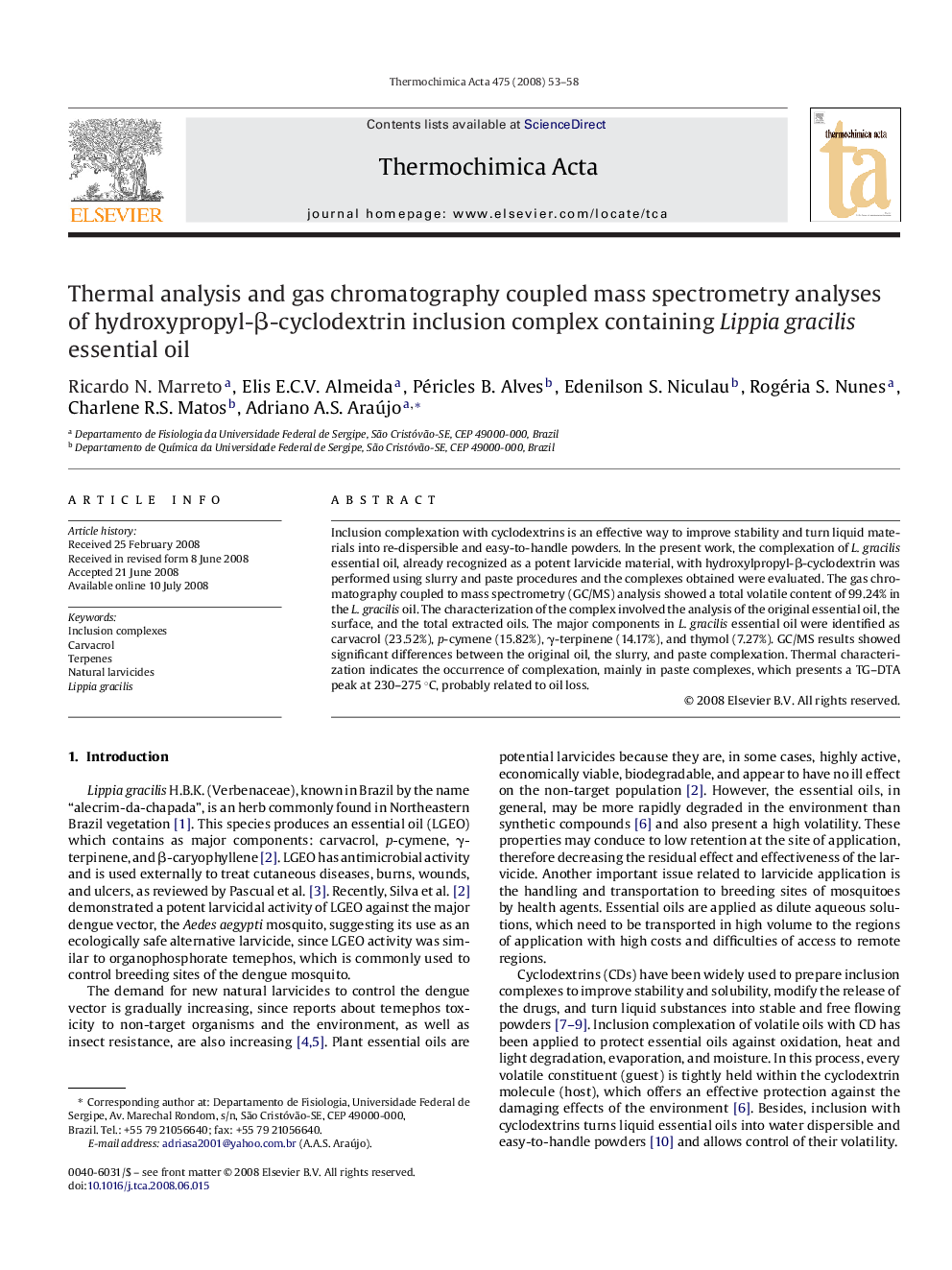| Article ID | Journal | Published Year | Pages | File Type |
|---|---|---|---|---|
| 675246 | Thermochimica Acta | 2008 | 6 Pages |
Inclusion complexation with cyclodextrins is an effective way to improve stability and turn liquid materials into re-dispersible and easy-to-handle powders. In the present work, the complexation of L. gracilis essential oil, already recognized as a potent larvicide material, with hydroxylpropyl-β-cyclodextrin was performed using slurry and paste procedures and the complexes obtained were evaluated. The gas chromatography coupled to mass spectrometry (GC/MS) analysis showed a total volatile content of 99.24% in the L. gracilis oil. The characterization of the complex involved the analysis of the original essential oil, the surface, and the total extracted oils. The major components in L. gracilis essential oil were identified as carvacrol (23.52%), p-cymene (15.82%), γ-terpinene (14.17%), and thymol (7.27%). GC/MS results showed significant differences between the original oil, the slurry, and paste complexation. Thermal characterization indicates the occurrence of complexation, mainly in paste complexes, which presents a TG–DTA peak at 230–275 °C, probably related to oil loss.
